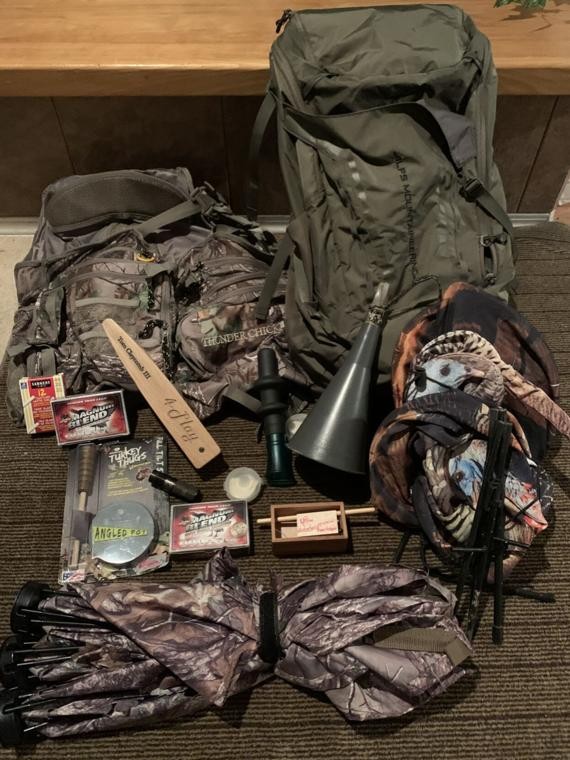When I started hunting turkeys as a kid, there wasn’t really much gear. I had an old Scotsman wood box call and used the same shotgun that I used for dove, quail and duck hunting. For shells we used 2-shot. That was pretty much the extent of our gear. Now? There is a boatload of gear available. But which items do you really need to help make you successful? I’ll list out some of the items that I think will help.
In the old days, your range was 40 yards max. It’s a whole different breed of cat to call a gobbler into 40 yards than it is to get one in to 75 to 100 yards. So the further you can extend your shots, the more chances you’ll have. So use ammo that can reach out to maximum distances. I’ve tested most of the major brands and HEVI-Shot ammo can stretch your shooting ranges. I think I favor their Blend shells. Of course, the 3 ½-inch mags are best but they kick like the proverbial mule. So I use 3-inch mags. Next you need a highly functional choke to get maximum performance out of your loads. I like Tru-Lock chokes.
To shoot longer distances, you’ll either need a good sight or scope.
CAMO
Turkeys have almost x-ray vision so be particularly careful to camo to the max. Use whatever pattern matches your locale the best. I don’t use the same pattern from head to toe but mix it up. For sure wear a face mask and gloves. Another thing that I’d throw in my pack would be an Ameristep Throwdown Blind. These are super lightweight portable little blinds that you can easily carry with you. This way as you’re moving around locating a bird you can have some concealment with you.
HUNTING VEST
I have a Scent Blocker Thunder Chicken Vest. Here’s why I recommend wearing a turkey vest. That way you can leave all of your calls in it so you don’t forget any. Also, they have a pad so you’re more comfortable while calling. If you’re not comfortable, then you’re going to be fidgeting around and get busted. They also have a pouch to hold your decoys.
DECOYS
I hunt in the mountains so light-weight decoys are of the essence, which means I use Montana Decoys. I’d say if possible, to have two to three decoys to increase your odds. Make sure that one is a Jake. Of course, if you know where they’re roosting set up off the roost before daylight in the direction that they’ll come off to.
CALLS
You’ll for sure want a locator call. A lot of people like a crow or owl call. I like my coyote howler. Hit it and it will shock them into gobbling. I like old wood box calls. If you’re new a Pushbox is easy to operate. You’ll also want to always carry a couple of reeds. They’re hands free so you can keep calling when they get in close while you’re holding your gun in the shooting position. Also have a Gobbling shake call.
You want to be comfortable so you can hit it hard all day so wear some good hiking boots and hiking socks.
Another big deal is shooting sticks. You don’t want to be set up calling and have to raise your shotgun to take a shot and spook your bird. Have your shotgun laying on your bi-pod and pointed in the direction that you think the gobbler will come in from.
It’s a whole lot easier to call in a bird if you can intercept them and get between where they are and where they’re going instead of making them totally change directions. It is more convenient for them.
When calling it is more productive to have two of you. That way if one comes sneaking in and circles you at 80 to 100 yards, he unsuspectingly runs over the top of your buddy that is concealed away from you. This is true when calling elk, crows and a lot game that we call.
And lastly hopefully you get your bird. But then what? You can bake it like normal or you may consider making turkey jerky out of it. I made jerky out of one a few years ago using one of the Hi-Mountain jerky blends and it was great. Use a knives of Alaska Cub Bear caping knife to bone it out.
Good luck!
Tom Claycomb lives in Idaho and has outdoors columns in newspapers in Alaska, Idaho, Utah, Nevada, Colorado and Louisiana. He also writes for various outdoors magazines and teaches outdoors seminars at stores like Cabela’s, Sportsman’s Warehouse and Bass Pro Shop.



